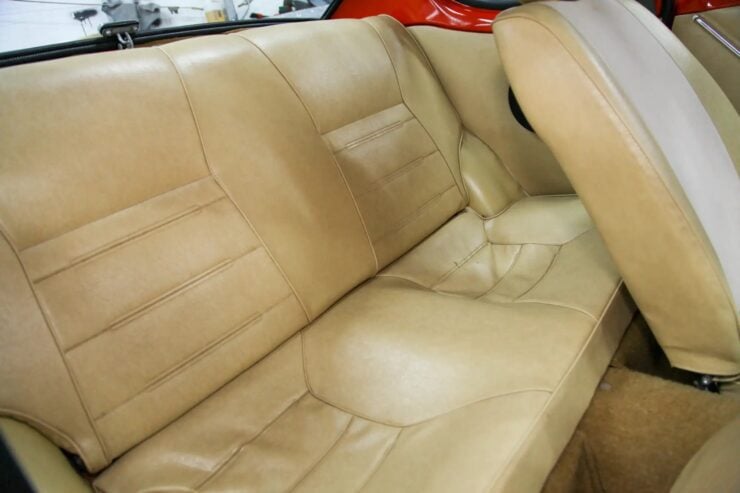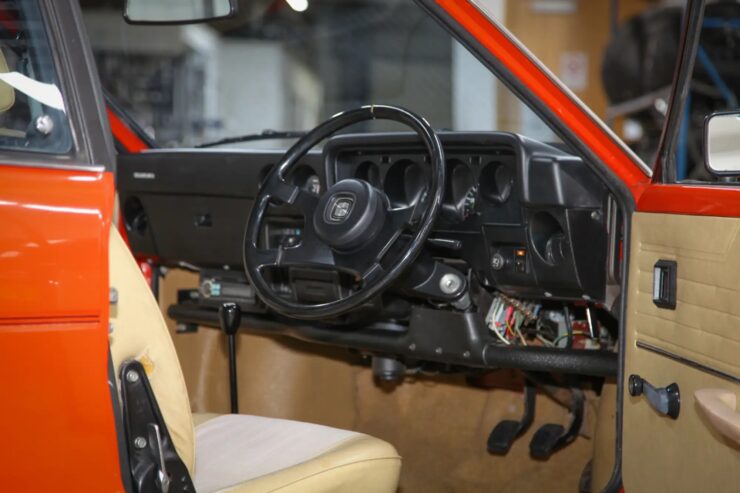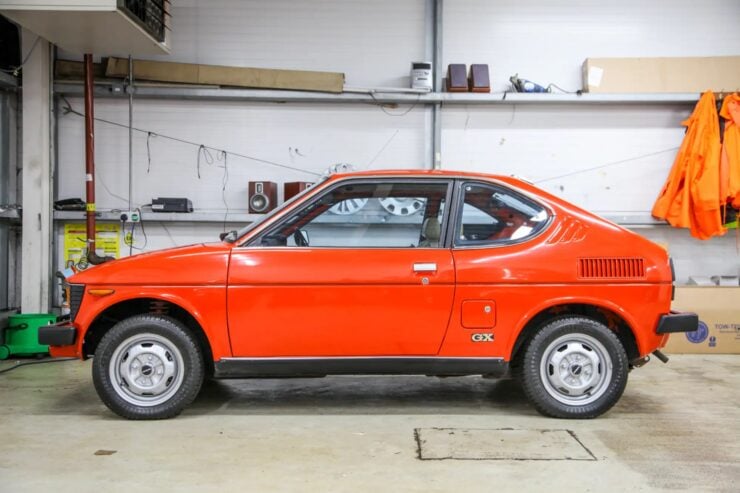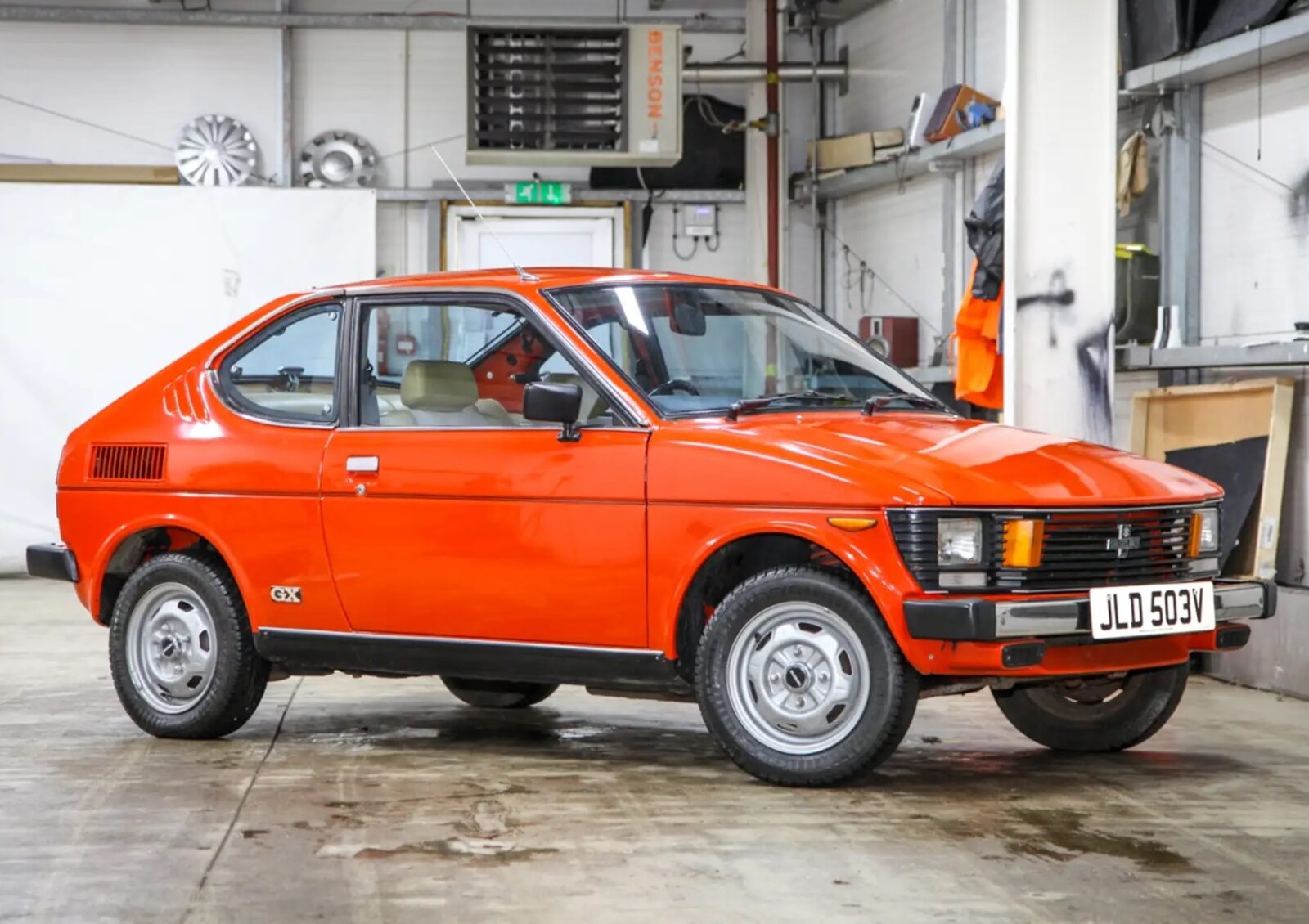The Suzuki Whizzkid is a car designed by Giorgetto Giugiaro at Italdesign, featuring a rear-engined, rear-wheel drive layout, independent four-wheel suspension, 2+2 seating, and a 970cc inline-four that could push it to a whisker under 90 mph.
Essentially, the Suzuki Whizzkid was the UK-market version of the Suzuki SC100, which in turn was based on the Suzuki Cervo – a model that had started out as a Japanese market Kei car. The Whizzkid would become a best-seller in Britain, with demand far outstripping supply, and it has now become a cult classic.
Fast Facts – The Suzuki Whizzkid
- The Suzuki Whizzkid, designed by Giorgetto Giugiaro, is the UK-market version of the Suzuki SC100. It featured a rear-engine, rear-wheel drive layout with a 970cc inline-four engine, and it sold out in Britain with the dealers struggling to keep up with demand. It’s now considered a cult classic due to its unusual design and limited remaining examples.
- The Suzuki SC100 “Whizzkid” is derived from the Japanese Kei car Suzuki Cervo, a small, lightweight vehicle developed to meet post-WWII economic restrictions. Kei cars, designed to minimize material use and maximize affordability, helped the Japanese population affordably get on the road while using fewer resources.
- The Whizzkid gained popularity in the UK and across several other markets, including South Africa, Hong Kong, and New Zealand, with 4,696 units sold in the UK. Rust and accidents claimed most, with just 96 road-registered examples remaining today.
- The 1979 Suzuki Whizzkid shown in this article is a well-preserved example with only 18,772 miles on the odometer. It’s set to be auctioned on October 31st by Iconic Auctioneers, with an expected sale price between £8,000 and £10,000, making it a rare opportunity for collectors.
What Is A Kei Car?
Kei cars are vehicles typically made in Japan specifically to meet the Japanese “kei-jidōsha” or “light automobile” regulations which result in far lower road tax and insurance premiums. Kei cars are always small and they’re powered by engines with displacements so low they might seem better suited to motorcycle use at first glance.


Kei cars were first conceived of in the years shortly after WWII, when Japan was rebuilding after the conflict. Gasoline and materials like steel, iron, and aluminum were still strictly rationed, and so the Kei car class was created to help get the Japanese on the road while keeping costs low and material use to a minimum.
Similar vehicles were being developed over in Europe, and all for very similar reasons, resulting in the development of the Microcar, the Vespa and Lambretta motor scooters, and mini cars like the Fiat 500, Morris Mini, Citroën 2CV, and many others.
The rules governing the Kei car class have been updated over the years, in order to keep it relevant as automotive technology continues to progress. More recently, the rules have been updated to also include electric cars, and the first electric Kei cars entered production in 2009.
The Suzuki Cervo
The Suzuki Cervo (SS20) is a family of Kei cars that entered production in 1977 and remained on sale until 1982, across a number of model iterations. The first version was powered by a 539cc three-cylinder, two-stroke engine that was mounted in the rear. Almost all were sold in Japan, though a small number were exported to Chile.
The body was designed by Giorgetto Giugiaro at Italdesign, and variations of this same design would be used for all variants. This was a good thing, as the styling proved broadly popular and did absolutely no harm to sales.


A later version of the car received the 797cc F8A inline-four, offering more power at the expense of a little more weight, with the most powerful version being powered by the 970cc F10A inline-four.
The Suzuki Whizzkid
The Suzuki SC100 “Whizzkid” was developed for Europe and the UK but it would be sold in a number of other markets including Hong Kong, South Africa, New Zealand, and a number of South American countries.
In total there would be 4,696 examples of the Suzuki Whizzkid sold in the UK. Just 96 remain road registered with the vast majority having succumbed to rust, accidents, or simply being junked back when their values were low.
The Whizzkid is now a cult classic in the UK and across the Channel in Europe, with clubs, meet ups, and online forums dedicated to keeping them on the road and offering tips and tricks on sourcing parts.
The 1979 Suzuki Whizzkid Shown Here
The car you see here is one of the original UK-delivered Whizzkids from 1979, it’s one of relatively few to survive, thanks in part to the fact that it’s been part of a private collection in the UK for many years.


The odometer is showing just 18,772 miles and it’s finished in Pillar Box Red over a well-appointed Cream interior, and it rides on silver 12 inch steel wheels. The listing notes that it comes with an original sales brochure, and it says that an oil and filter service will be completed prior to the sale.
It’s now due to roll across the auction block with Iconic Auctioneers on the 31st of October with a price guide of £8,000 – £10,000 or approximately $10,368 – $12,960 USD. If you’d like to read more about it or register to bid you can visit the listing here.











Images courtesy of Iconic Auctioneers








